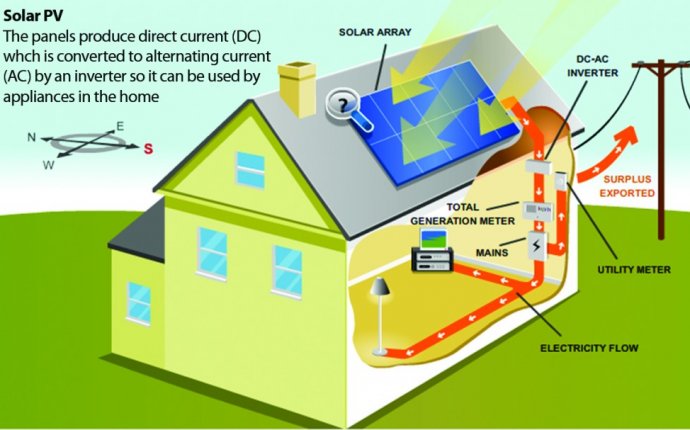
home pv System
With climate change threatening the planet and constantly rising electricity prices threatening your pocketbook, there’s no better time to make the switch to a solar photovoltaic (PV) system. As technology improves, PVs are becoming more affordable and efficient, making them that much more of an attractive option for your home’s energy needs. But before making an impulsive purchasing decision that you will later regret, it’s a good idea to do some homework beforehand to determine your home’s electricity consumption and PV needs for your area.
Calculate your Home’s Electricity Usage
- Collect your electricity bills for the past year so you can calculate your average monthly electricity usage. Calculating an average is essential because electricity use peaks in the hottest months due to the high air conditioning demand.
- Add up the kWhs for all 12 months and divide that number by 12 to determine your average monthly energy consumption.
- Divide the monthly figure by 30 to determine your daily kWh usage.
OPTIONAL: To more accurately assess your home’s electricity needs, make a list of all your appliances, listing the power consumption for each in wattage and whether it is AC or DC power. Track how many hours you use each of those appliances per week, then for each appliance, multiply the watts by the hours/week to determine the number of watt-hours per week you use each appliance. Alternatively, you can figure out the energy usage for particular appliances by installing an electricity usage monitor between the appliance and outlet. Leaving the monitor in place for a week will give you the appliance’s watt-hours per week. Enter the data you have collected into a load sizing worksheet (see Resources). Work through the worksheet’s remaining calculations to determine the total number of Amp hours per day that your appliances use.
Determine Insolation
- Locate a solar insolation table online (see Resources) to determine the insolation, the average number of hours per day that the sun produces peak sunlight (or an accumulation of all sunlight equivalent to that amount of peak sunlight), for your area.
- Find the nearest city to you on the table and write down the average daily figure. To determine specific insolation data for individual days of the year, use NASA’s Atmosphere-Ocean Model.
Calculate Energy Needs
- Plug the figure from Section 1, Step 3 “Daily kWh” into the following calculation. Use the average insolation value from Section 2, Step 2 for the “# hours” to determine how many kW you need your solar system to generate per day:Daily kWh / # hours = # kW
e.g. 12 / 4 = 3 - Plug the answer from the previous step into the following calculation, which accounts for standard energy losses of solar PV systems:# kW x 1.3 (increase size of PV system by 30%) = # kW (actual size of PV system you need)
e.g. 3 x 1.3 = 3.9In this example, you would need a 3.9 kW solar PV system to satisfy your home’s energy needs.
Selecting a PV System
- Measure how much space you have to mount your solar panels.
- Decide on a budget for your system.
- Find a system that satisfies your power requirements, but still fits within your space restrictions. Monocrystalline silicon panels are the most efficient. Therefore, you would need less panels than a thin film system.
When purchasing a PV system, bear in mind that warranties vary between 10 to 25 years. If you don’t have the funds to purchase a longer lasting system, make sure it will at least payback your initial investment in energy savings. Also, remember to look into the many incentives that your government offers. Switch to solar and every time you look up at the sun you’ll have yet another reason to thank it.









